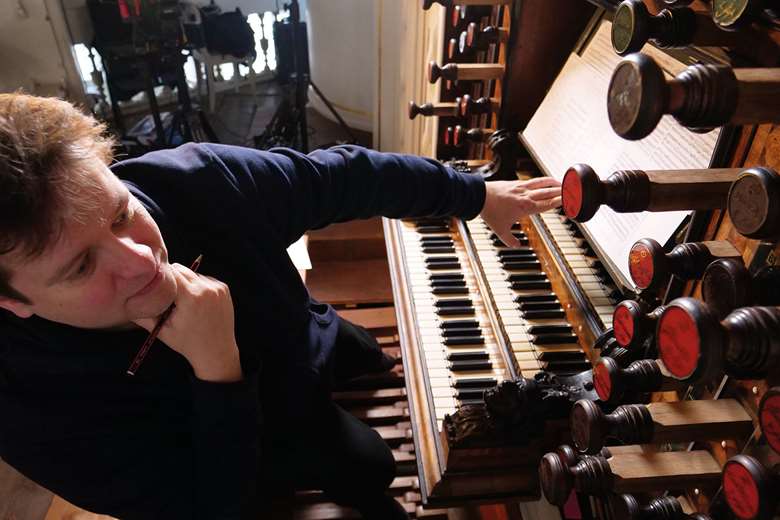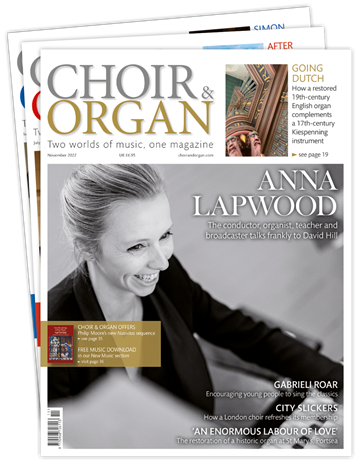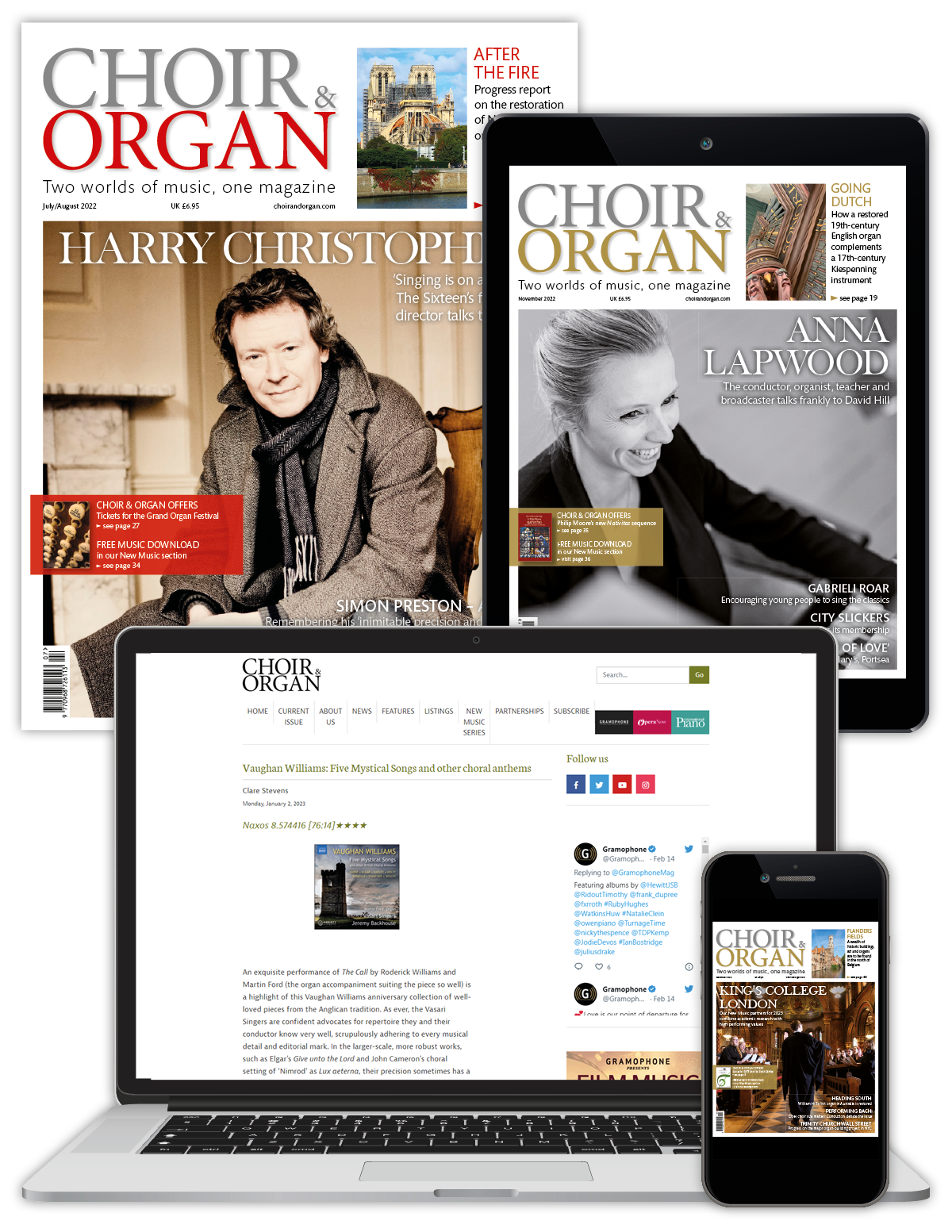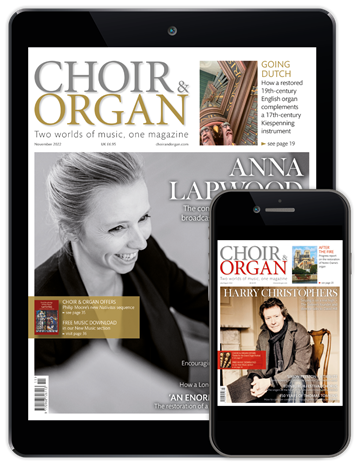The key to understanding J S Bach's organ works
Daniel Moult
Friday, February 21, 2025
‘Playing on the organs of J S Bach’s time could open our minds to new performance possibilities’

All of us who perform music from past times are realising it in the present, and probably preparing it for the future, too. We have to make choices which affect every aspect of the performance, from tempo to articulation to the smallest of nuances.
Until the early 20th century, these critical choices were made without recourse to much historical research. In other words, a musician of Liszt’s generation would interpret the music of J S Bach much as they would that of Liszt or Wagner. While the works of ‘old masters’ were treated with respect, their performing traditions remained (for the most part) consigned to the past. There is an honesty and integrity to such an approach. Without having to assimilate a myriad of different stylistic conventions as systematised in academic treatises, I suspect musicians felt less encumbered when practising, performing or teaching.
So when did it all change? The so-called HIP (historically-informed performance) movement (also referred to as ‘authentic’ or ‘period performance’) grew out of an organ revival begun in 1920s Germany. Its roots in other areas of classical music can be traced to the 19th century, but it did not become the musical ‘orthodoxy’ until the 1970s or so. Most musicians educated from the 1970s to 1990s will have been taught the gospel of early music. It was so prevalent and so accepted that very few questioned its premises; indeed, it would be easy to argue the early music movement was the single most consequential thing that happened to music in the 20th century. Matters of ‘authenticity’ were often discussed with evangelical zeal, and opposing factions went to war in print (and sometimes on recordings, too) to spread their own version of the gospel. And, rather like biblical interpretation (to stretch my metaphor), the truth was presented as incontrovertible, which was not the case, of course.
The supremacy of ‘authenticity’ itself has since receded. Perhaps the most significant critic of all things ‘early music’ or HIP, Richard Taruskin questioned its whole philosophy and approach in a series of challenging articles from the 1980s onwards. There is often a distance between theory and practice, and it wasn’t until our own century that these ideas percolated through to performing musicians and their students. But if authenticity is less relevant in our age, or even dead, what replaces it? We live in an age of pluralism, so performing a past work through the prism of our own musical culture is not as clear-cut as it was to our forebears. Just as many of us don’t mourn the receding of performance styles of the 1960s (eg notably fast tempi and caricatured articulation) because they do not seem relevant today, we must be prepared for future generations to say the same about our approaches to older music. Authenticity, it has been argued, was partially a late Romantic hangover as we sought refuge in the past (let’s go back to 1725 as vividly as we can), rather than the radical new approach as hailed by its earlier exponents. I think it was both for different people.
So, where do we stand in 2025? Perhaps a way ahead is less clear than ever before. My personal view is that we musicians should strive to absorb as much information as we can in relation to performance and performing traditions. We can then accept or reject what we want from a position of knowledge and strength, while always striving for performances of personal identity and integrity.
The legacy of J S Bach and later performing traditions
There is a logical development that goes from the generation after J S Bach’s death (nudging towards slightly wider extremes of articulation and even gentle rubato, in his son C P E) towards J S Bach as realised by Straube, Bridge, Widor, Dupré and others.
In these later traditions, Bach was conceived, edited and performed according to the tastes of the day. At its most extreme, this would entail frequent crescendi and diminuendi, suggestions of tempo rubato, and sometimes a ‘legato absolu’ [absolute legato].
A feature of performance in the 2000s onwards is a rebirth of interest in Romantic instruments as a vehicle for earlier repertoires, and a desire to play Bach and others in ways which take some inspiration from the performance style or writings of our 19th- and 20th-century forebears: Bach on a Lewis organ in the manner of W T Best, on a Cavaillé-Coll in the light of Widor or Schweitzer, or on a Sauer in the tradition of Straube etc. But what extra information and inspiration can we learn from playing on the organs of J S Bach’s time? These could open our minds and emotions to new performance possibilities beyond recreating specific points in time.
What can a ‘Bach’ organ teach us?
What is a Bach organ? The North German organs (typified by Arp Schnitger) known during his younger days? Or the Central German organs (by such as Gottfried Silbermann, Trost and Wagner) of his prime? They are different sound-worlds, but both have a place in our understanding of Bach’s organ music. For our purposes, let us consider what sound qualities these organ types have in common:
➤ Clarity
➤ Presence (i.e. even a single Gedeckt stop will be ‘felt’ in the space)
➤ Interesting, characterful sounds – sometimes bold in larger sounds, but never forced
➤ Balance – it is easy to balance registrations between divisions for the purpose of counterpoint, trios, etc (even though it is often necessary to couple the main manual to the pedals on many Central German organs).
To my mind, it is more important to consider these qualities and principles than to try slavishly to recreate period registrations on a non-Bach organ. More importantly, these organs and their sounds encourage us to control the key and the wind in specific ways, and suggest maximum speeds and more besides. We’ll look at these ideas in the next issue.
Daniel Moult is a concert organist and organ tutor based in London. He is head of organ at the Royal Birmingham Conservatoire
This article originally appeared in the Spring 2025 issue of Choir & Organ magazine. Never miss an issue – subscribe today






